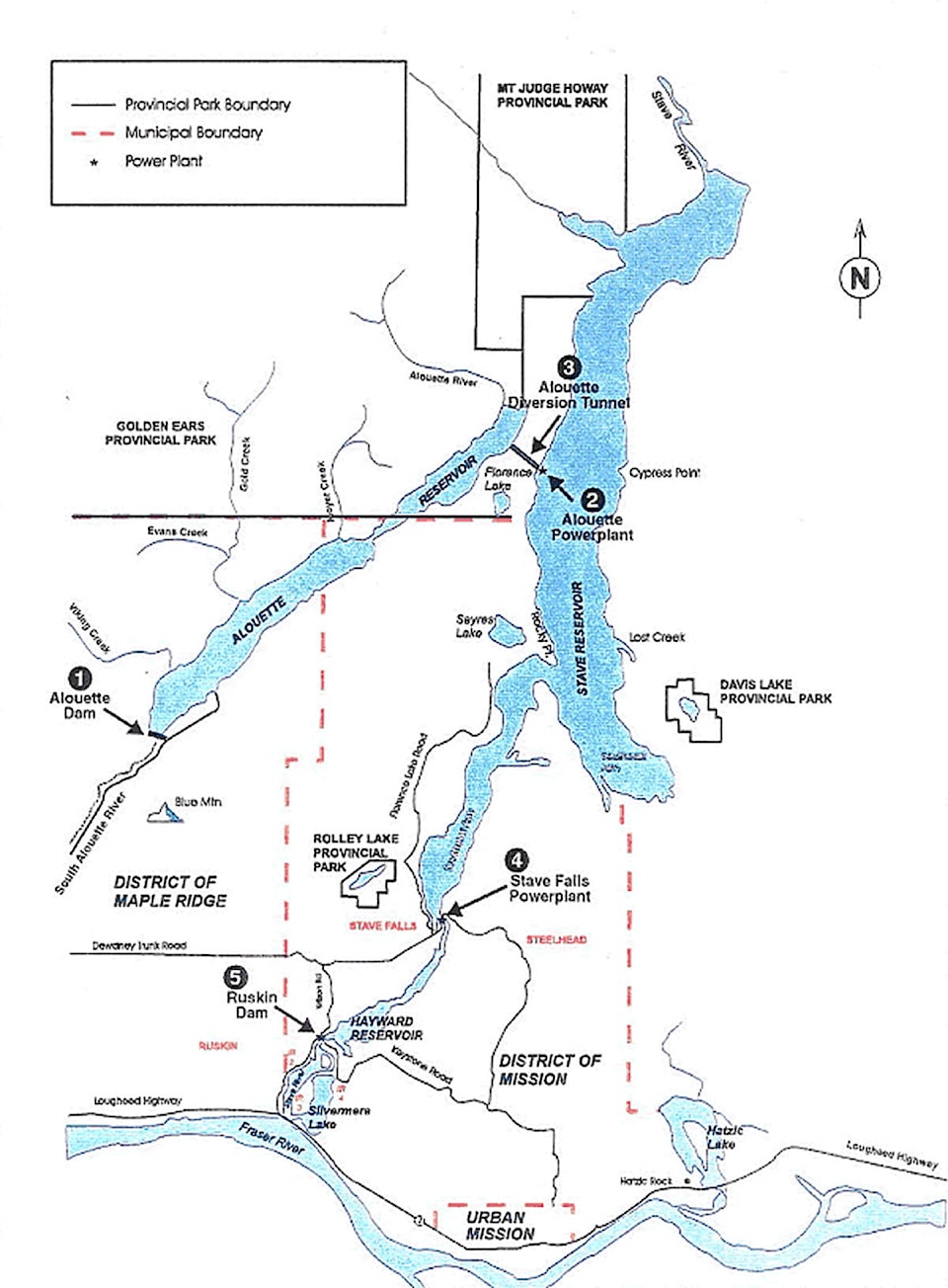By Jack Emberly/Special to The News
Wild stocks are vital to healthy eco-systems, the economy, the social fabric of B.C.’s coastal communities and indigenous cultures.
Protecting and restoring wild fish habitat and stocks is a priority for both the governments of Canada and B.C. department of fisheries and oceans (June 15, 2020).
This governmental pledge to support wild salmon introduces the new B.C. Salmon Restoration Fund, money allocated to (research and fish and habitat restoration) to “make wild fisheries more sustainable for the long term.”
It’s a goal, says salmon historian and former president of Alouette River Management Society Geoff Clayton, which could be significantly advanced with a fish ladder above Alouette dam.
In 1925, it blocked migration to a watershed that produced five species of salmon, a major part of First Nations diet.
As West Coast salmon race towards extinction, Clayton said, it’s time to let Alouette salmon – specifically sockeye – return to their natal lakes and streams.
Recently, I asked Clayton to elaborate.
G.C. When the Alouette dam blocked access to all anadromous fish at the lake’s natural outlet to the river, the result was extinction of a healthy run of sockeye and other migratory fishes.
By 1930 a run of Gold Creek Chinook was lost, too.
Now, there’s an attempt to reintroduce sockeye using a trap and truck method to get them over the dam.
But, when resident salmonids (kokanee) try to migrate to the ocean each spring they’re entrained (killed) in the power tunnel supplying water to Stave Lake.
This mortality is believed to be the main reason a proposed hatchery program – needed to build the sockeye population – will fail.
I believe B.C. Hydro has blocked efforts for a ladder because of fisheries act issues regarding entrainment of salmon smolts.
Reporting to ARMS in 2020, biologist and salmon expert, Dr. Marvin Rosenau wrote the watershed might produce “in excess of 50,000 sockeye on peak return years if there were… opportunities for preventing entrainment in the diversion tunnel. This would allow safe passage to the lower Alouette River for these fish.”
J.E. Sounds logical. What’s the problem?
G.C. In the 1960’s lower Fraser rivers, like the Alouette, were written off by the DFO as urbanized loses. They told me this in 1969.
Today, the DFO spends millions to save interior runs of sockeye (which is commendable).
It’s ironic though, when lower Fraser rivers like the Alouette are dammed and forsaken. Maple Ridge Councillor Gordy Robson knows this.
J.E. What numbers of salmon did the lake and tributaries produce before the dam and why did government abandon them?
G.C. Before the dam, escapements to the Alouette River were variously reported, but Katzie had weirs and traps at the mouth of the river to intercept historically large runs.
We could get them back. An environmental report [in] 2004 – that ARMS commissioned – concluded the lake could support 65,000 to 68,000 ocean-run sockeye again, if this species were restored to the Alouette Lake system.
J.E. What was government thinking?
G.C. Those responsible for protecting salmon in 1909 knew sockeye runs would be destroyed by the building of this dam.
The B.C. government approved it anyway—fish lives didn’t matter. Lights for Vancouver and the surrounding areas did, and that was the governments’ single focus then.
J.E. A joint Canada/B.C. press release on June 15 of this year says restoring salmon is especially important during COVID-19, because it’s “critical to our economy and food supply.”
Are you encouraged by that statement?
G.C. No.
Our governments are talking the talk but not walking the walk, or there’d be a fish ladder on the Alouette dam by now.
The slide on the Fraser (Big Bar) gets headlines, but overlooks our best opportunity – by far – to rebuild salmon runs in the lower reaches.
BC Hydro and the B.C. government bock at spending a few million to build a ladder.
Compare that to Puget Power in Washington State. They’ve spent more than $100 million to get juvenile fish back into the river and adults over a dam that’s three times higher than the Alouette.
Puget Power people I talked to said they’d been wildly successful in rebuilding Baker Lake’s sockeye runs.
Closer to home, for the Brunette River in Burnaby, Metro Vancouver funded a successful fish ladder a few years ago.
Fish ladders get fish above dams all over the world. Why not here?
The Alouette is a low elevation dam and duck soup for engineers to build a ladder on, and operate for fish passage.
In fact, ARMS had a University of B.C. engineering professor (emeritus) built a working model of one for the Alouette.
He said it would cost about $4 million in 2010 dollars.
J.E. Why hasn’t it happened?
G.C. I don’t know.
Three weeks prior to the last election I saw then-local MP Dan Ruimy on Facebook handing Prime Minister Justin Trudeau a fish ladder proposal for the Alouette Dam from ARMS, but as yet we haven’t seen any action on the ground.
.
– Jack Emberly is a retired teacher, local author, and environmentalist
________________________________
• If there is more to this issue, please let us know about it. Email us at editor@mapleridgenews.com. We look forward to hearing from you. In the meantime, like us on Facebook or follow us on Twitter.
